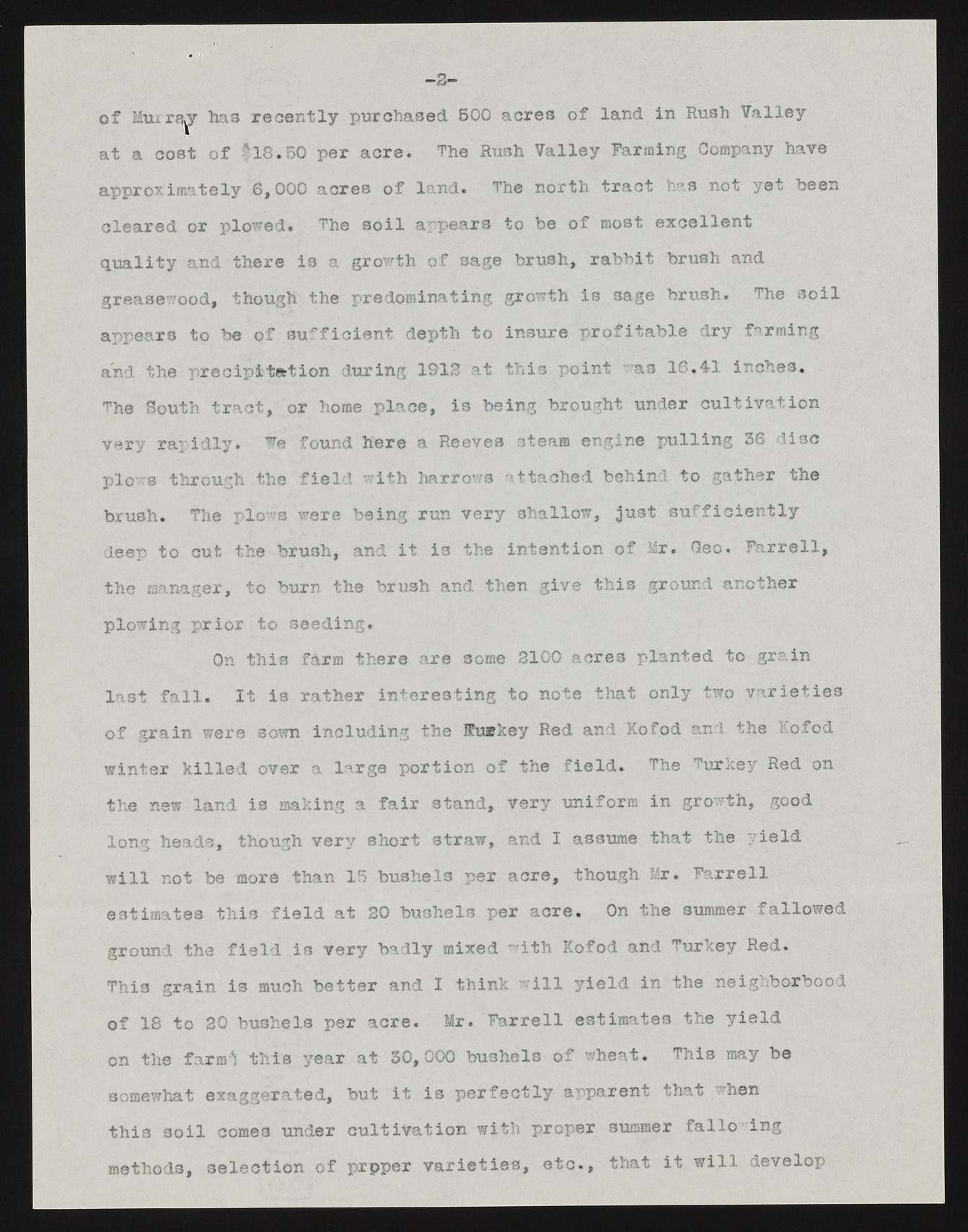Copyright & Fair-use Agreement
UNLV Special Collections provides copies of materials to facilitate private study, scholarship, or research. Material not in the public domain may be used according to fair use of copyrighted materials as defined by copyright law. Please cite us.
Please note that UNLV may not own the copyright to these materials and cannot provide permission to publish or distribute materials when UNLV is not the copyright holder. The user is solely responsible for determining the copyright status of materials and obtaining permission to use material from the copyright holder and for determining whether any permissions relating to any other rights are necessary for the intended use, and for obtaining all required permissions beyond that allowed by fair use.
Read more about our reproduction and use policy.
I agree.Information
Digital ID
Permalink
Details
Member of
More Info
Rights
Digital Provenance
Publisher
Transcription
of Hux re^y has recently purchased 500 acres of land in Rush Valley at a cost of |18.? 50 per acre. The Rush Valley Farming Company have approximately 6,000 acres of land. The north tract has not yet been cleared or plowed. The soil appears to be of most excellent quality and there is a growth of sage brush, rabbit brush and greasewood, though the predominating growth is sage brush. The soil appears to be of sufficient depth to insure profitable dry farming and the precipitation during 1912 at this point was 16*41 inches. The South tract, or home place, is being brought under cultivation very rapidly. We found here a Reeves steam engine pulling 56 disc plows through the field with harrows attached behind to gather the brush. The plows were being run very shallow, just sufficiently deep to cut the brush, and it is the intention of Mr. Geo. Farrell, the manager, to burn the brush and then give this ground another plowing prior to seeding. On this farm there are some 2100 acres planted to grain last fall. It is rather interesting to note that only two varieties of grain were sown including the Huskey Red and Kofod and the Kofod winter killed over a large portion of the field. The Turkey Red on the new land is making a fair stand, very uniform in growth, good long heads, though very short straw, and I assume that the yield will not be more than 15 bushels per acre, though Mr. Farrell estimates this field at 20 bushels per acre. On the summer fallowed ground the field is very badly mixed with Kofod and Turkey Red. This grain is much better and I think will yield in the neighborhood of 18 to 20 bushels per acre. Mr. Farrell estimates the yield on the farm"; this year at 30, 000 bushels of wheat. This may be somewhat exaggerated, but it is perfectly apparent that when this soil comes under cultivation with proper summer fallo ing methods, selection of prpper varieties, etc., that it will develop

